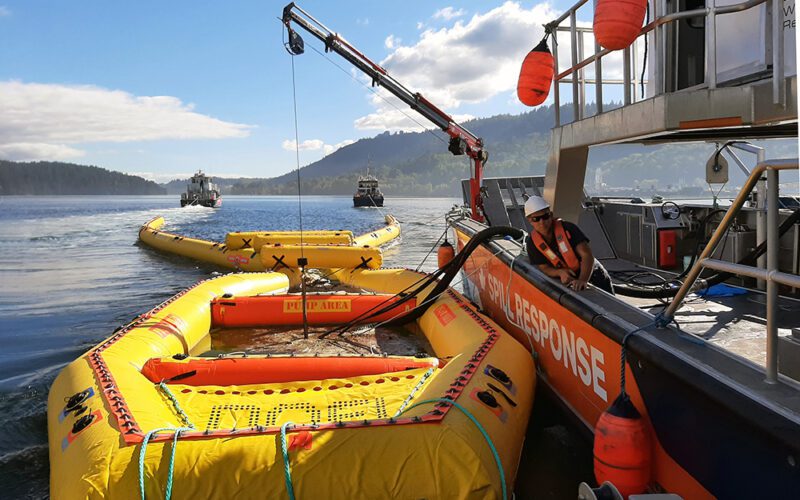On Dec. 4, the Coast Guard published a Request-for-Information (RFI) pertaining to vessel response plans (VRP) for western Alaska. VRPs are developed in order to prepare for an oil spill and have to detail both the equipment and resources carried on a vessel as well as shoreside assistance that can quickly respond. This is a new effort focused on developing distinct response plan criteria for the Western Alaska and Prince William Sound Captain of the Port zones. The criteria must include minimum response times, improvements to wildlife response and consideration of prevention and mitigation measures. Taken together, the Western Alaska…

The Port of Prince Rupert moved 23.5 million tons of cargo in 2023, 5% less than 2022’s volumes, the Port Authority revealed in January. This marks a third straight year of volume declines for the British Columbia seaport. The decline, according to the Prince Rupert Port Authority, reflects challenges of shifting global shipping routes, soft demand for imports, and competition with other North American trade gateways for discretionary cargo. “However, despite the decline in volumes, significant milestones were reached in 2023 that support the evolution of the trade gateway to become more competitive, resilient, and sustainable in the near and…

From difficult weather conditions to the state of a location in the aftermath of a disaster, a number of factors come into play when an oil spill occurs. And while many of them are out of one’s control, experts in this field know that one of the factors they can control is the ability to quickly respond to a spill. “The faster you can get there, the quicker you can contain it and the more likely you can mitigate the impact of the damage of that spill,” said Michael Lowry, a spokesman for Western Canada Marine Response Corp., an organization…

A ship that Maersk is calling the world’s first large methanol-enabled container vessel was named Ane Mærsk during a late-January ceremony in the shipyard of HD Hyundai Heavy Industries in Ulsan, South Korea. The vessel is named after Ane Mærsk Mc-Kinney Uggla, the chair of the A.P. Moller Foundation and A.P. Moller Holding. Ane’s eldest granddaughter served as godmother and christened the vessel by breaking a champagne bottle over the bow. The Ane Mærsk is the first of Maersk’s 18 large methanol-enabled vessels that’s scheduled to be delivered between 2024 and 2025 and is the world’s second methanol-enabled container vessel,…

International shipping companies Maersk and Hapag-Lloyd in January announced that they’re joining forces to form a new network, which they’re calling Gemini Cooperation. “Together we aim to develop a new best-in-class network starting in February 2025. This partnership will be a strong match as we have a shared ambition and commitment to deliver quality,” the shippers said in a joint statement. “Through our combined fleets, our aspiration is to offer unrivalled schedule reliability, a far-reaching global network with competitive transit times and a reduced carbon footprint,” the statement continued. Gemini Cooperation, which launches Feb. 1, 2025 and would comprise a…

A few months ago in this space, I wrote a column detailing how the Panama Canal has been affected by drought, and that vessel traffic through the shipping route has been adversely impacted by it. If you missed that column and aren’t familiar with the ongoing situation, here’s a summary: according to climate scientists, Panama experienced its worst drought in over two decades last year, even though the country’s rainy season, which lasts from May through December. Typically, the country experiences anywhere from 8.4 inches to 27.5 inches of rain during the last seven months of the year, but fell well…

